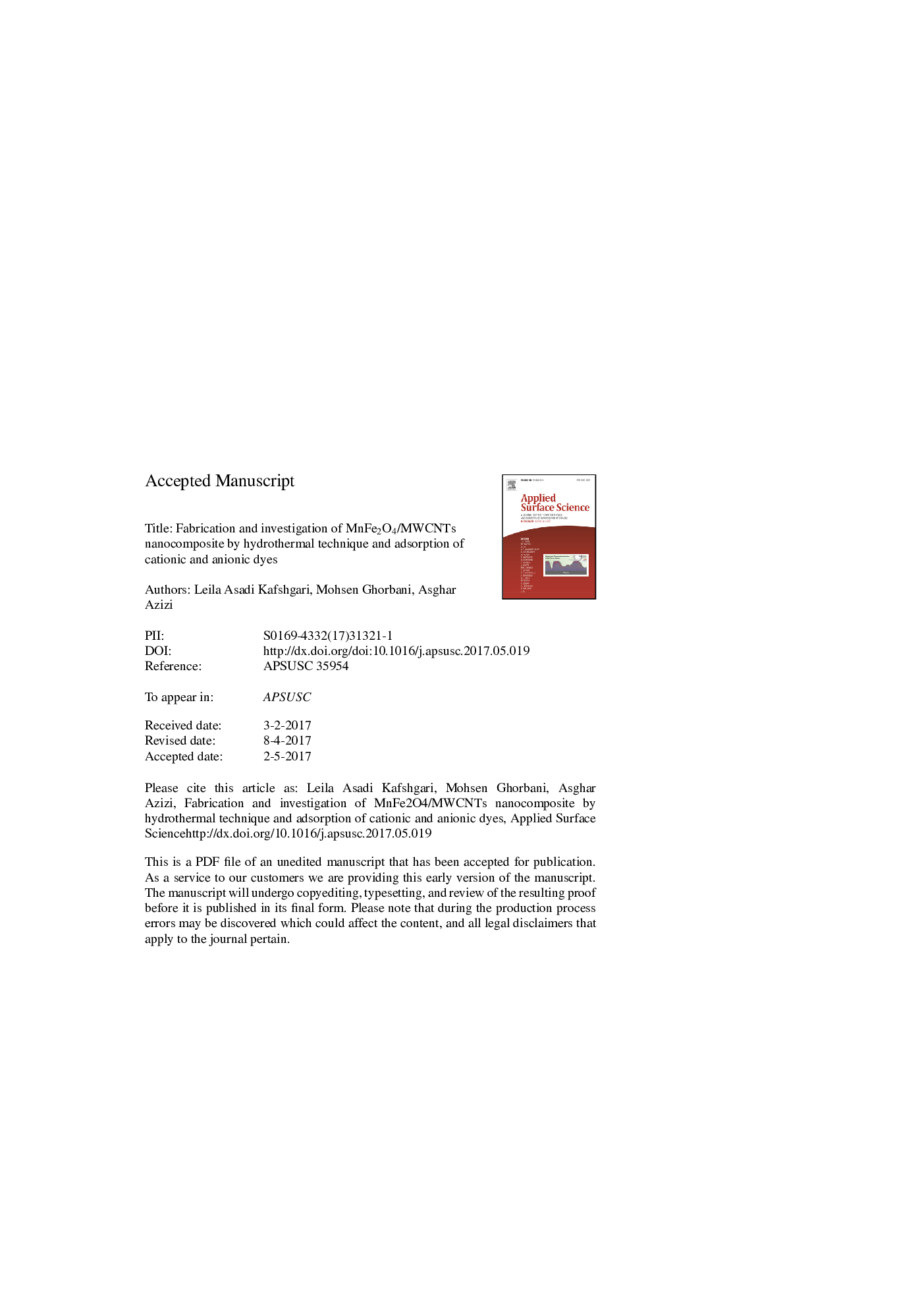| Article ID | Journal | Published Year | Pages | File Type |
|---|---|---|---|---|
| 5346873 | Applied Surface Science | 2017 | 44 Pages |
Abstract
In present study, MnFe2O4/MWCNT nanocomposite synthesized using the hydrothermal technique and has been used for removal of DR16 and Y40 dyes from aqueous solutions. The characteristics results of FTIR, XRD, FESEM and TEM indicated that the nanoadsorbent was successfully fabricated. Magnetic sensitivity results demonstrated that the nanoparticles with saturation magnetization (Ms) value of 8.93 emu gâ1 would have a fast magnetic response. The performance of adsorption was investigated in a batch reactor employing parameters expected to affect the maximum adsorption capacity (qm) such as pH, contact time, initial dye concentration and temperature. The highest sorption capacities of DR16 and Y40 after 300 min at 328 K were found to be 607.79 mg/g and 280 mg/g at pH of 2 and 6, respectively. The adsorption behavior over the time was assessed through pseudo-first, pseudo-second and Weber-Morris intra particle diffusion models. It was found that the pseudo-second order model gave the best agreement to the experimental data. Adsorbate-adsorbent interactions as a function of temperature was evaluated by Langmuir, Freundlich, Temkin and Sips isotherm models from which Sips isotherm had the highest consistency with the experimental data. Thermodynamic parameters including ÎG°, ÎS° and ÎH° were determined over the temperature range of 298-328 K. The results revealed that the adsorption reaction of DR16 onto MnFe2O4/MWCNT was spontaneous and exothermic, whilst the sorption process of Y40 was spontaneous and endothermic. In addition, activation energy values implied that the removal process of DR16 and Y40 was physical in nature.
Related Topics
Physical Sciences and Engineering
Chemistry
Physical and Theoretical Chemistry
Authors
Leila Asadi Kafshgari, Mohsen Ghorbani, Asghar Azizi,
